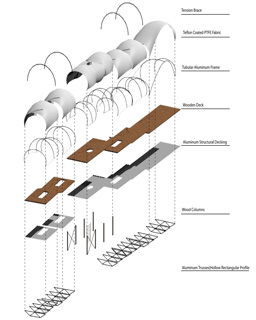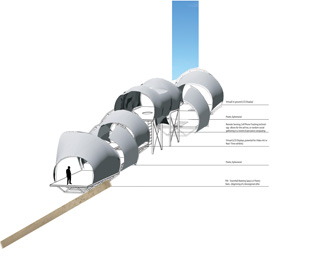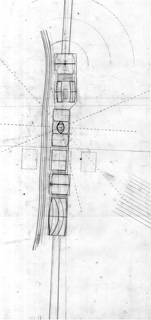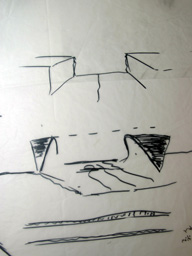In
a culture of the windshield view, the true nature of things is too often
fed to us or approached, like highway signs. The Great Lakes themselves,
all the
water, dunes, and ships, are unfortunately reduced to icons, or surfaces
on which we fix our gaze. From the very beginning of our studio’s research
into Glerl’s activities and the Lakes, I’ve sensed a need to
educate about the fundamental qualities of Water and our environment.
Therefore, my project’s emphasis is the “poetics of water,” its
ephemeral characteristics. Calvino writes, “one tries to make language
into a weightless element that hovers above things like a cloud or better,
perhaps, the finest dust, or better still, a field of magnetic impulses. The
other tries to give language the weight, density, and concreteness of things,
bodies, and sensations...” which suggests qualities hardly discussed
by Glerl or current environmental politicos. I’ve tried to work with
the site in my proposal, offering a solution, attuned to the rhythms and
elements of its location, and elaborating on its whims and performances.
Pervasive computing, satellite spectra (Leo, Meo, etc..), and other information
networks are a feature of today’s world, and something that cannot be
escaped. I think it is important to recognize how architecture might tap into
these “resources,” especially considering architecture’s
urban and societal responsibilities. I propose some surveillance techniques
in order that the structure has some knowledge or capacity to affect and
conglomerate people for educational and social purposes. If we are to achieve
a sustainable
ethic, than people need face time in the form of town-hall meetings, poetry
slams, etc... Therefore, Architecture is both the stage and the performance.





























